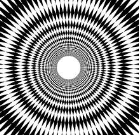Court Allows “Battery by GIF” Claim to Proceed–Eichenwald v. Rivello
 Journalist Kurt Eichenwald suffered a seizure after seeing a tweet with a strobe GIF. The sender tweeted the GIF allegedly knowing Eichenwald suffered from epilepsy. The sender was charged criminally, and Eichenwald also filed a civil suit. Defendant moved to dismiss plaintiff’s battery claim. The court rejects defendant’s arguments.
Journalist Kurt Eichenwald suffered a seizure after seeing a tweet with a strobe GIF. The sender tweeted the GIF allegedly knowing Eichenwald suffered from epilepsy. The sender was charged criminally, and Eichenwald also filed a civil suit. Defendant moved to dismiss plaintiff’s battery claim. The court rejects defendant’s arguments.
The defendant argued that there must be some physical contact which was lacking here. Again, the court is not sold. The court starts out by characterizing the allegations as follows:
Defendant sent Plaintiff an image with the intent to cause Plaintiff to have a seizure. Whatever exact name a legal scholar may put to it, that is a tort; it is conduct outside the bounds of a civil society, conduct that should be punished so as to deter its repetition, and conduct that causes a compensable harm. . . . [A]lthough the exact contours of the tort lack perfect clarity, ultimately it qualifies as a battery. It is alleged that Defendant purposely acted to violate the dignity and health of the Plaintiff and did in fact so harm. The novelty of the mechanism by which the harm was achieved does not make those actions any less a tort.
As to defendant’s argument that the medium of the contact took the tort outside the legal definition of battery, the court says that contact can be amorphous, and merely requires some “physical” as opposed to “intellectual or emotional” force. Exposure to second-hand smoke can result in a battery, as can radiation and excessive noise and electrical shock. An “epileptogenic GIF” falls in the same category.
__
This is not exactly a shocking result. A growing number of cases recognize that harmful acts perpetrated via social media are tortious, just as they would be if perpetrated offline.
Rivello may or may not plan to assert a First Amendment defense, but the court signals that it’s not likely to be successful:
Conscious interpretation of [Rivello’s] message was irrelevant to the offensive touching . . . The strobe GIF was a physical tool, one that would have the same impact on any person with Plaintiff’s condition. It would not have mattered if the GIF displayed hateful words, words of kindness, certain colors or pictures, or only abstractions. What mattered was the physical nature of the light emitted from the GIF. The light and not the emotional or intellectual impact of any accompanying message, caused a seizure, and it would not have caused a seizure if viewed by a person without epilepsy, regardless of whether they interpreted the tweet as mean-spirited, frightened, or friendly.
A footnote contains a passing reference to the “eggshell skull” rule, which could come into play down the road. I’m not suggesting the rule should be that a plaintiff in Eichenwald’s position has to take affirmative steps to avoid exposure to content that may trigger seizures, but I can see Rivello raising this argument.
Eric’s Comment: I believe the sender’s conduct should be tortious in addition to criminal. It was a depraved and reprehensible act. However, fitting the activity into the tort of “battery” raised the complex epistemological question of how electronic content can constitute a “physical” touching. This is an issue also raised by the cyberlaw trespass to chattels doctrine, which the court didn’t address. Instead, the court’s handling was awkward. By anchoring the requisite physicality in the screen display (“the physical nature of the light emitted from the GIF”), the court implies that any electronic message that directly contributes to a physical injury (say, a message encouraging someone to cut themselves who actually does it) would constitute a battery because the recipient’s eyes physically processed the message’s light/dark patterns. I know that’s not what the court meant, and the court tried to cabin the implications through a helpful analogy to blinding someone with a laser pointer as a battery. Still, it would have been great if the court had been more careful in describing the interactions between the virtual and the physical.
Case citation: Eichenwald v. Rivello, JKB-17-1124 (D.Md. May 31, 2018)
Related posts:
Court Affirms Stalking and Harassment Conviction for Tagged Tweets–In re AJB
Ban on Sex Offenders Using Social Media Violates First Amendment–Packingham v. North Carolina
Illinois Anti-SLAPP Law Doesn’t Apply To Law Firm Blog Posts–Bock & Hatch v. McGuireWoods
North Carolina State Supreme Court Strikes Down Cyberbullying Statute
‘Badass Lawyer’ Loses Lawsuit Over Parody Twitter Account–Levitt v. Felton
Marquette University’s Troubling Report on Faculty Blogger (Guest Blog Post)
Courtney Love Defeats Twibel Claims–Holmes v. Love
High Schooler’s “Murder” Tweet Isn’t “Cyberstalking”–State v. Kohonen
